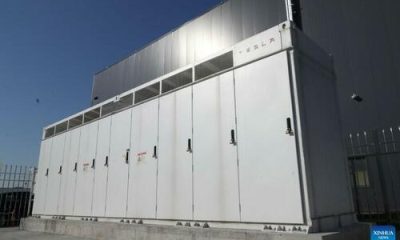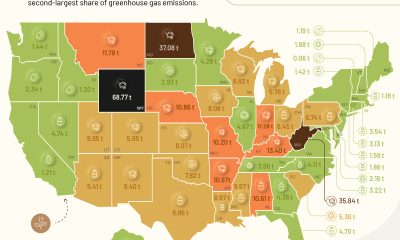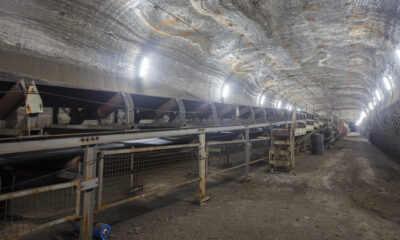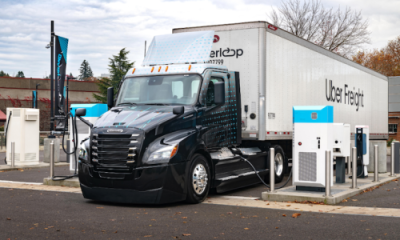Energy & Critical Metals
Renewables overperform on COP27 criteria
“Available, affordable, sustainable.” These criteria are often brought to the table when discussing energy, writes Bertrand Piccard, chair of Solar…

“Available, affordable, sustainable.” These criteria are often brought to the table when discussing energy, writes Bertrand Piccard, chair of Solar Impulse Foundation.
COP27 has been no exception. An energy source will only appeal to political and economic decision-makers if it is 1) available and therefore easy to exploit, 2) cheap, because it’s the first consideration for users, and 3) sustainable, to support Paris Agreement goals.
But aren’t there other equally important criteria to consider?
Since one of the themes at COP is energy, let’s take a look at how this “trifecta” of criteria evolved for renewables.
At the time of the first Rio conference in 1992, the only criteria for adopting clean energies was sustainability, because cost and availability were still out of reach (with the exception of hydroelectricity). Ten years later, when I launched my plan to travel around the world in a solar plane, clean energies (solar, wind, biomass and geothermal energy) had become more readily available but were hardly competitive and lacked subsidies compared to fossil fuels.
More from COP27
COP27: US and Ukraine in deal for SMRs to produce hydrogen and ammonia
Doosan Enerbility wins contract for turbine island at Egypt nuclear plant
Today, prices for renewables have fallen 80%. There is no longer any objective reason to dwell on cost as a factor in decision-making. Photovoltaics have become the cheapest energy source, far ahead of fossil fuels. It was recently trading at 1.5 cents per kWh on the Portuguese public market.
Adding to the List: Usability, Security, Efficiency
Yet the criticisms continued.
Faced with the uncertainty of wind and solar, a new criterion appeared: energy must now be “usable,” meaning we must be able to store it and access it. This condition does indeed require consideration. We need to look into the storage of summer heat underground and pumped storage in dammed lakes, now possible on a large scale, as batteries and hydrogen are not yet available in large quantities.

This year at the COP, yet another requirement has come into play: “security,” or energy independence, which fossil sources are no longer able to guarantee. The conflict in Ukraine is undeniably the catalyst. Only local, decentralized renewable production can address this, provided of course that we don’t become dependent on other countries for the supply of materials.
We need to remember that if we don’t succeed in addressing efficiency and waste, even energies that are “available, affordable, sustainable, usable and secure” will still not be adequate. The plants and equipment we use for energy consumption are responsible for the loss of 75% of the energy we produce. So we must add “efficiency” to the list of criteria. This is good news since there are now a plethora of technical solutions for more effective energy utilization.
Moving Forward
However, it will take time for clean energies to replace dirtier ones. Far too much time, which is why we are now talking again about nuclear power as a low-carbon and essential transition solution –even though nuclear no longer meets the price criterion and its radioactive waste does not make it a safe nor a sustainable source.
Also of interest
GE runs gas turbine on hydrogen blend at Sharm El Sheikh plant
IEA calls to end new coal as climate change threats rise
We need to ensure that the urgency of the situation doesn’t lead to bad decisions. During a conversation here at COP with two representatives of the solar and wind industry, they expressed unease about a proposal by the European Commission to further regulate production of renewable energy.
This would be a mistake. In fact, the European Union should transform this crisis into an opportunity to accelerate its energy transition, by facilitating administrative procedures for deployment of renewable energy projects.
Above all, government agencies must let the market act because these energies have demonstrated their competitiveness.
Despite a lengthening list of criteria for renewables adoption, no one imagined that renewable energies would be able to meet them, and no one foresaw that they would even be the only energy sources to meet all the criteria.
Let’s hope that 30 years after the Rio Conference, the attitudes of COP27 participants will have evolved as much as these technologies.
ABOUT THE AUTHOR
Bertrand Piccard is Chair of the Solar Impulse Foundation, United Nations Ambassador for the Environment and Special Advisor to the European Commission.
The post Renewables overperform on COP27 criteria appeared first on Power Engineering International.

Uranium Exploration Company Announces Additional Staking in the Athabasca Basin
Source: Streetwise Reports 12/22/2023
Skyharbour Resources Ltd. announced an update from its Canada-based Falcon Project along with additional…
Tesla Launches New Mega Factory Project In Shanghai, Designed To Manufacture 10,000 Megapacks Per Year
Tesla Launches New Mega Factory Project In Shanghai, Designed To Manufacture 10,000 Megapacks Per Year
Tesla has launched a new mega factory…
Giving thanks and taking stock after “a remarkable year”
An end-of-year thank you to our readers, industry colleagues and advertisers before Electric Autonomy breaks from publishing until Jan. 2
The post Giving…


















